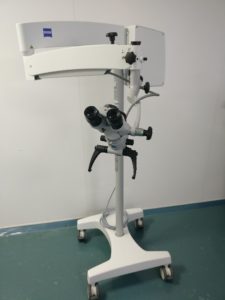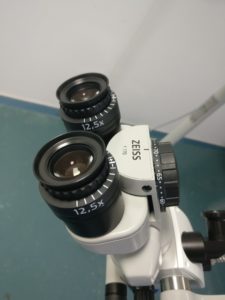Get Care
VARICOCELE
What are Varicoceles?
Source: Urology Health, American Urological Association
A varicocele is when veins become enlarged inside your scrotum (the pouch of skin that holds your testicles). These veins are called the pampiniform plexus. Around 10 to 15 out of 100 have varicocele. It is like getting a varicose vein in your leg.
Varicoceles are when the pampiniform plexus veins in the scrotum become enlarged. These veins are like varicose veins (twisted, swollen veins found in the leg). Varicoceles are more common on the left side of the scrotum. This is because the male anatomy is not the same on both sides. Rarely, varicoceles can exist on both sides at the same time.
Most of the time, varicoceles cause no problems and are harmless. Less often varicoceles can cause pain, problems fathering a child or one testicle to grow slower or shrink.
What Happens Normally?
Testes need a certain body heat that is below our core body heat for optimal sperm production, maturity and function. The body heat in the scrotum is about five degrees lower than that of the belly or pelvis. The latter is due to the presence of pampiniform plexus, which act as a countercurrent heat exchanger, cooling blood in the testicular artery before it enters the testicles. This helps keep the testes at the body heat needed to make good quality sperms. When these veins become enlarged such as in varicocele, overheating of the testes can lower sperm production and function, which may affect fertility.
Symptoms
Most males with a varicocele have no symptoms. Some may cause infertility (problems fathering a child) and slow growth of the left testicle during puberty. Varicoceles may be the cause of fertility problems in about 4 out of 10 men who have problems fathering their first child. They may also be the cause of fertility problems in about 8 out of 10 men who have problems fathering a child after their first.
Causes
There may be many causes of varicoceles. The valves in the veins may not work well (or may be missing). If blood flow is sluggish, blood may pool in the veins. Also, the larger veins moving from the testicles towards the heart are connected differently on the left and right sides. More pressure is needed on the left side to keep blood flowing through the veins towards the heart. If blood flows backwards or pools in the veins, that can cause veins to swell.
Are Varicoceles Common?
About 15 out of 100 men have varicoceles. It is hard to predict which of these 15 will have fertility problems caused by their varicocele. But about 4 in 10 men tested for fertility problems have a varicocele and decreased sperm movement. There is no link with other defects, race, place of birth or ethnic group.
Diagnosis
Varicoceles are found through self-exam of the scrotum or during a routine doctor’s exam. They have been described as a “bag of worms” because of how they look and feel.
Urologists often check for varicoceles with the patient standing. You may be asked to take a deep breath, hold it and bear down while your urologist feels the scrotum above the testicle. This technique is known as the “Valsalva maneuver.” It lets your urologist find any enlarged veins.
Your urologist may order a scrotal ultrasound test. Signs of varicoceles on ultrasound are veins wider than 3 millimeters with blood flowing the wrong way during the Valsalva maneuver. The ultrasound can also show the size of the testicles. This is useful in deciding how to treat teens.
Treatment
Often, varicoceles are not treated. Treatment is offered for males who have:
- fertility problems (problems fathering a child)
- pain
- the left testicle growing more slowly than the right
- abnormal semen analysis
There are no drugs to treat or prevent varicoceles.
When needed, surgery is the main form of treatment. Embolization (briefly blocking the veins) is a non-surgical lesser effective treatment option.
Surgery
There are many ways to do varicocele surgery. All involve blocking the blood flow in the pampiniform plexus veins.
Surgery is done under general anesthesia or regional anesthesia. The two most common surgeries are:
- Microscopic varicocelectomy: With this technique, the surgeon makes a 1 cm cut above the scrotum. Using the microscope, the surgeon ties off all small veins, but avoids the vas deferens, testicular artery and lymphatic drainage. The procedure takes 2 to 3 hours.
- Laparoscopic varicocelectomy: With this technique, the surgeon inserts thin tubes in the abdomen and performs vein ligation.


Surgical microscope
Surgery Results
Since surgeons have started using smaller cuts through the muscle for open surgery, healing time and pain are about the same with microscopic and laparoscopic surgery. Problems after either surgery are rare. Some problems could include:
- varicocele remaining (persistence) or coming back (recurrence)
- fluid forming around the testicle (hydrocele)
- injury to the testicular artery
There is a small chance surgery won’t fix the problem. In rare cases, injury to the testicular artery can lead to loss of the testicle. Persistence or recurrence of the varicocele happens in less than one of ten patients who have surgery.
Microscopic surgery has the lowest persistence rate or chance of varicocele coming back.
After Treatment
Healing after surgery is fast and pain is often mild. You should not work out for 10 to 14 days. You can often return to work 5 to 7 days after surgery. You will also follow-up with your urologist. For surgery done for fertility problems, semen analysis is done three to four months later.
The impact of varicocele repair on fertility isn’t clear. Some studies show fertility gets better after varicocele repair while other studies don’t. Semen quality gets better in about 6 out of 10 infertile men after varicocele repair. Varicocele treatment should be considered about along with other fertility treatment choices.
In teens, where the main reason for surgery is slow testicular growth, catch-up growth may or may not happen.
